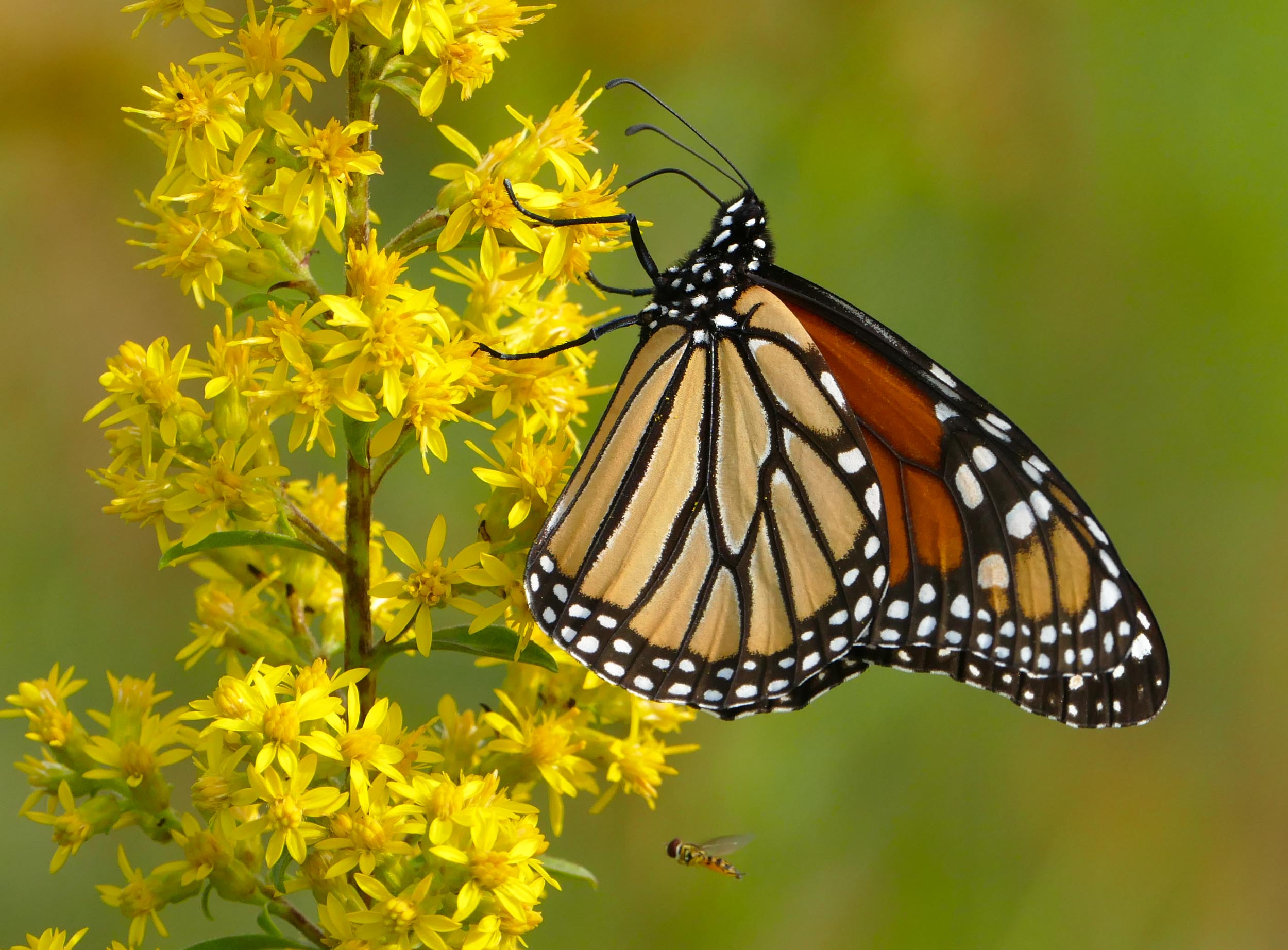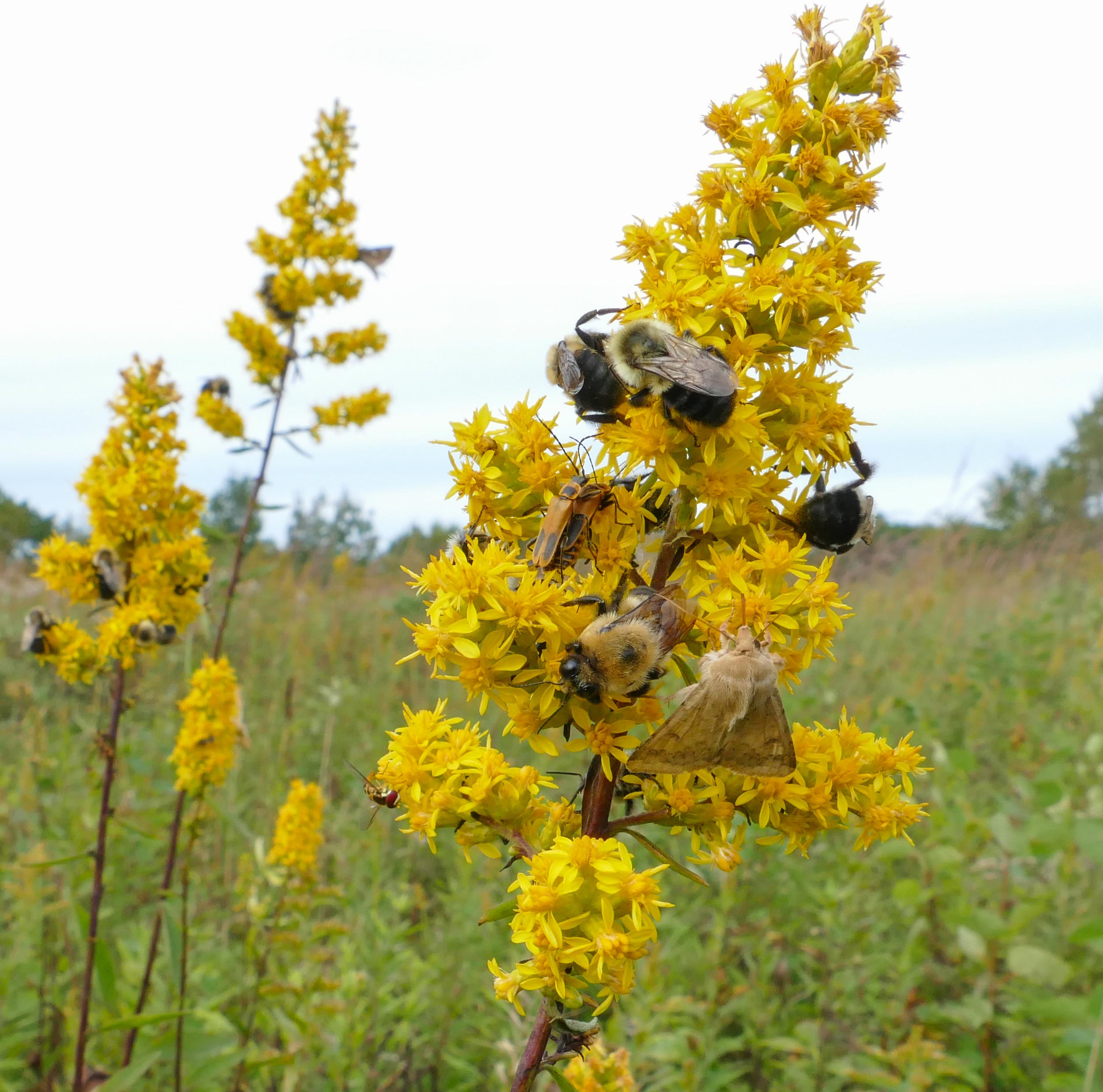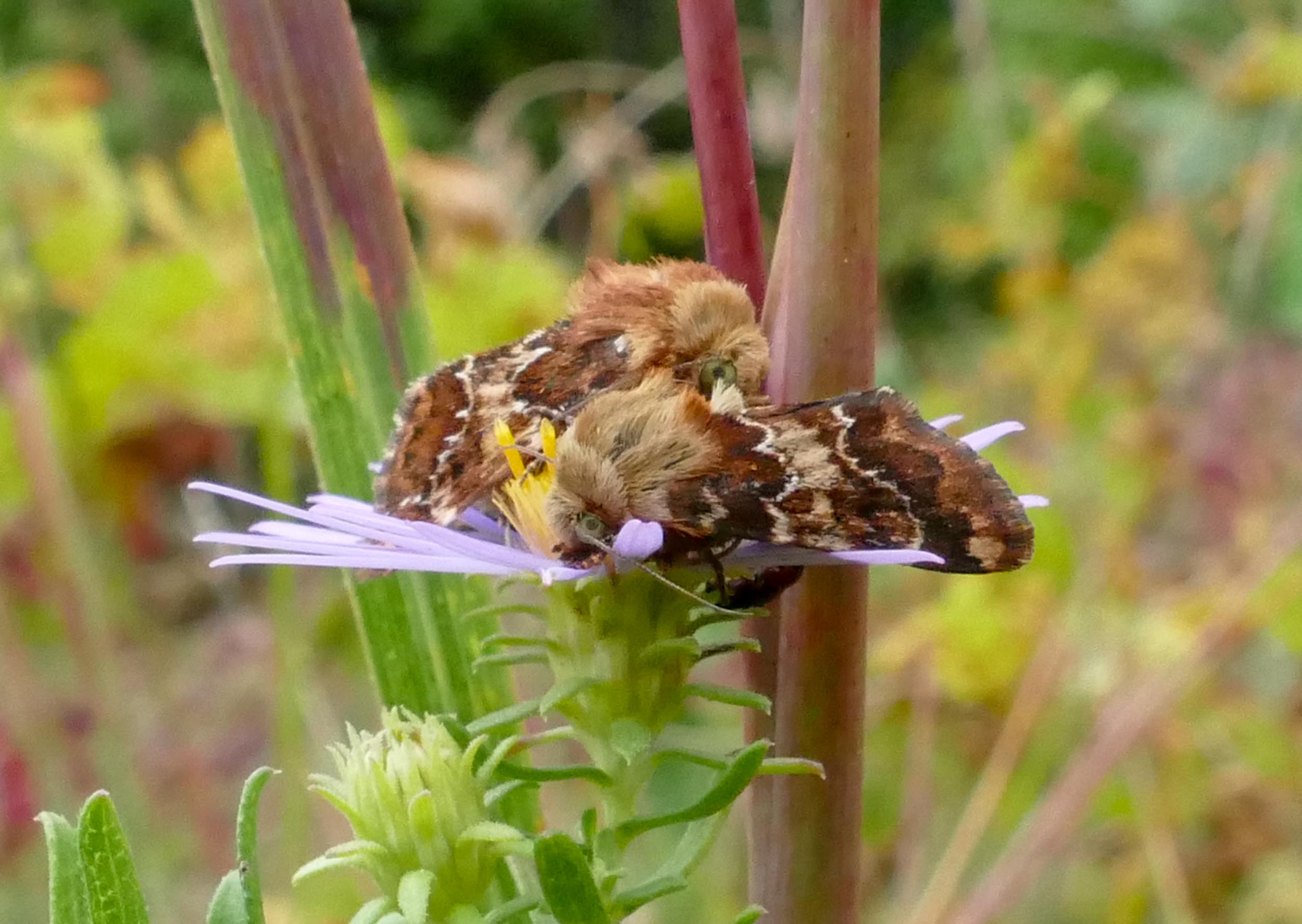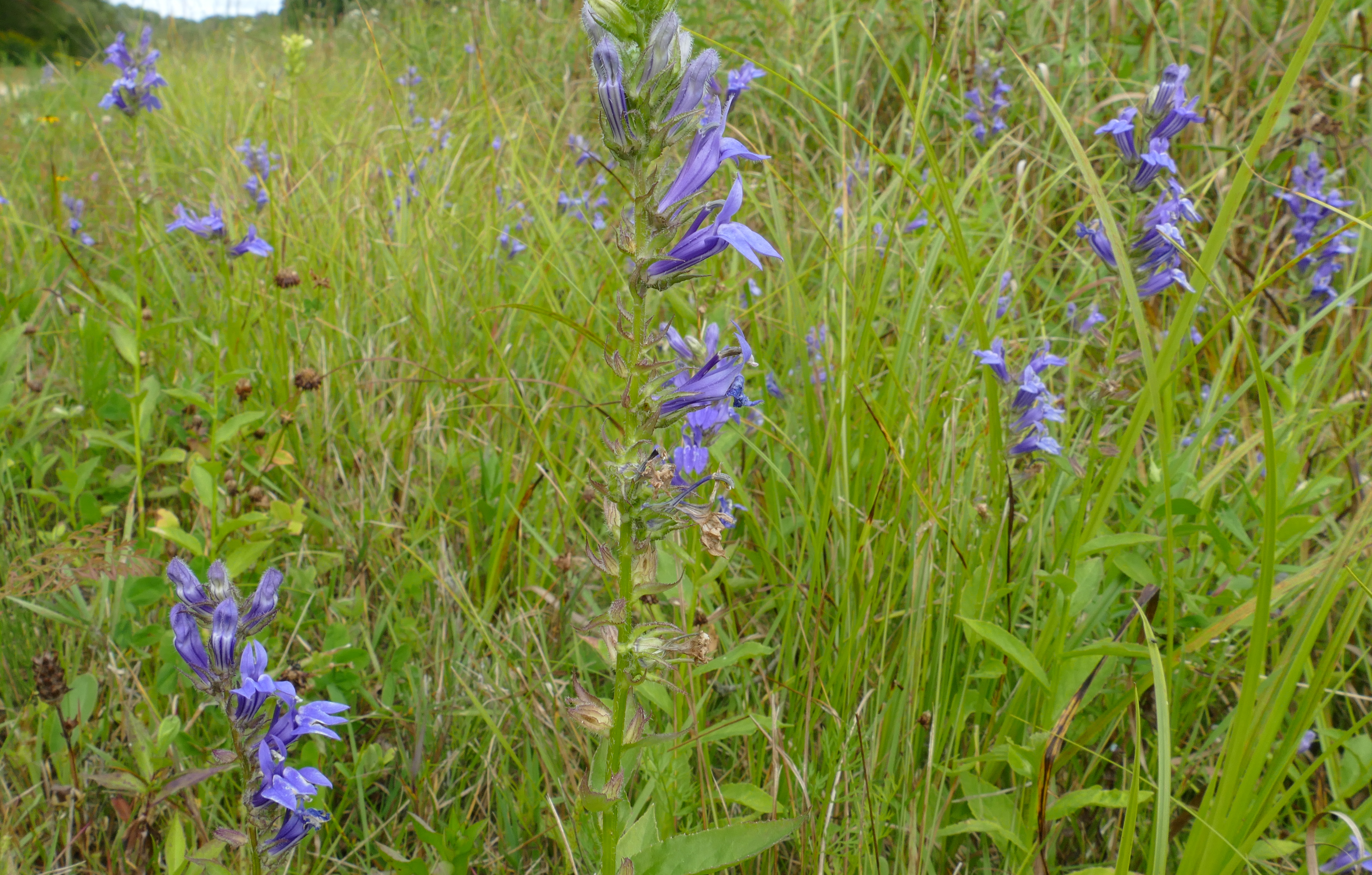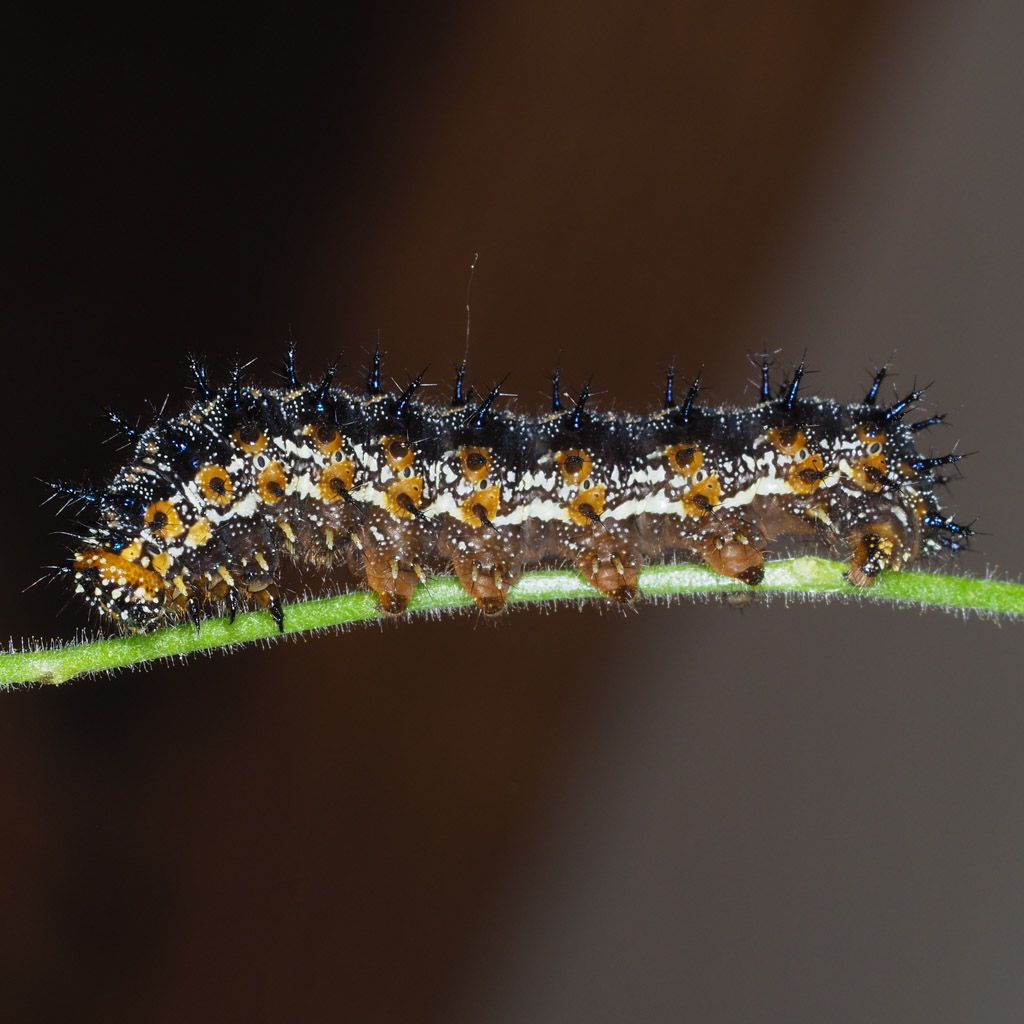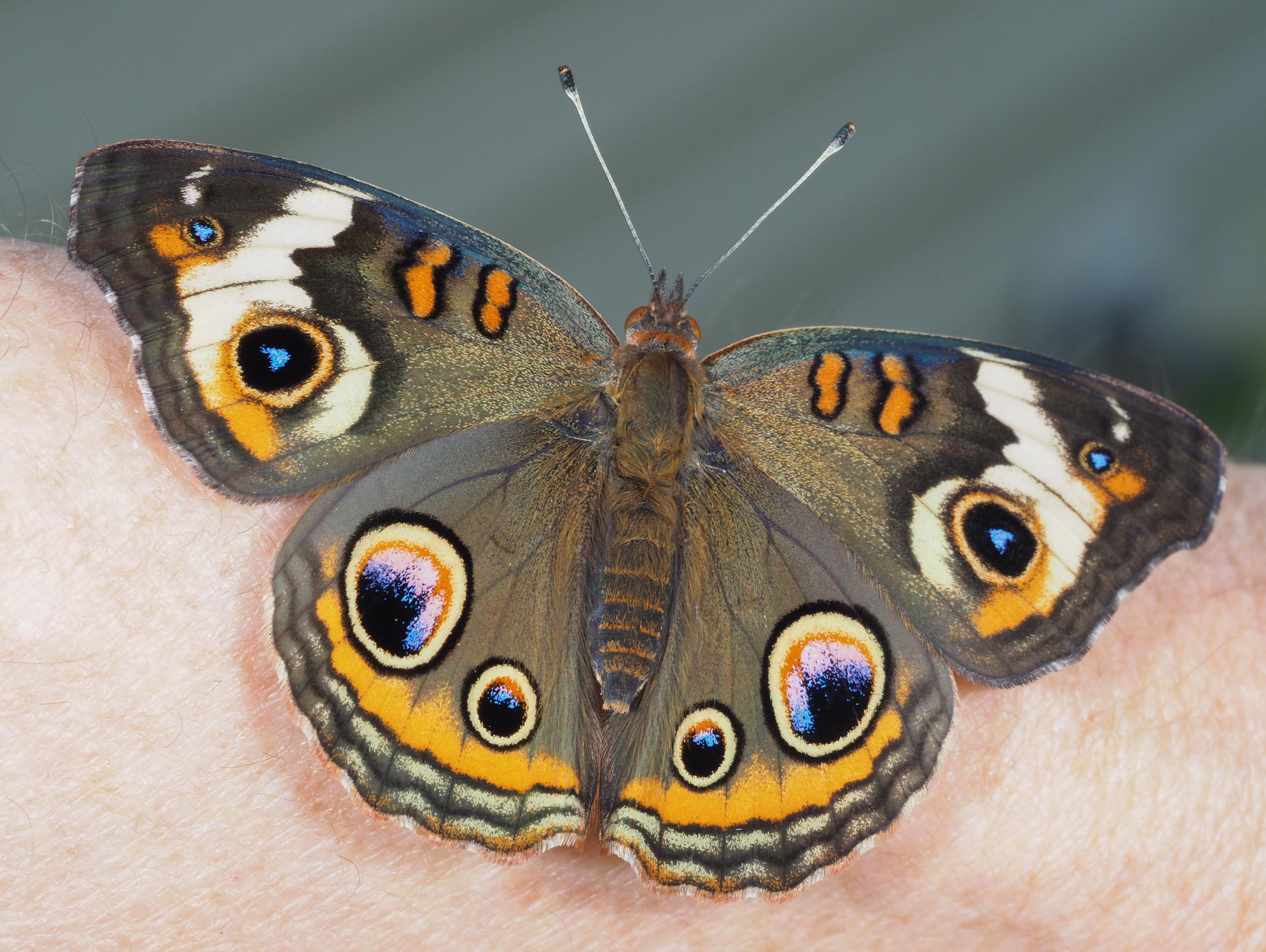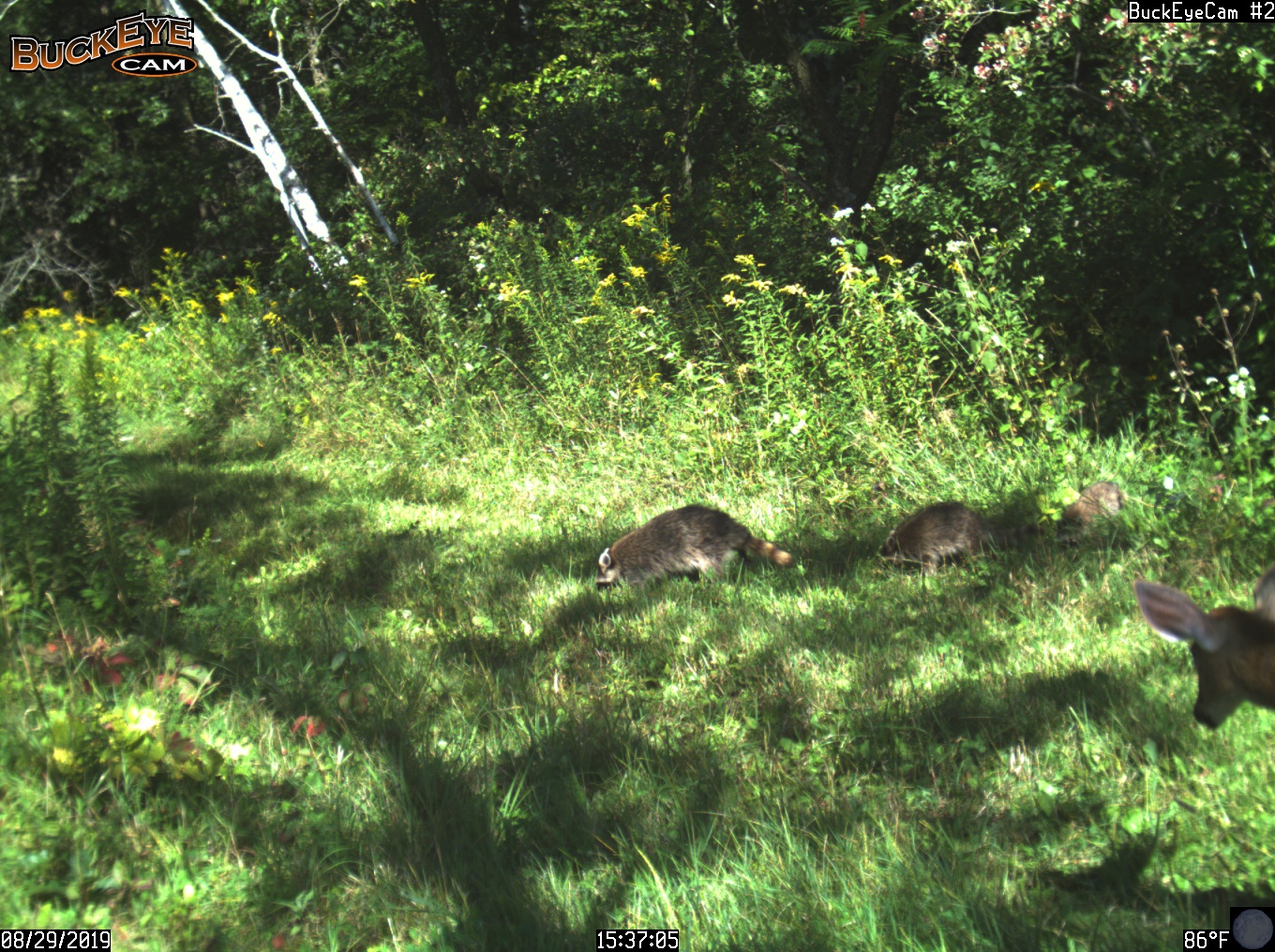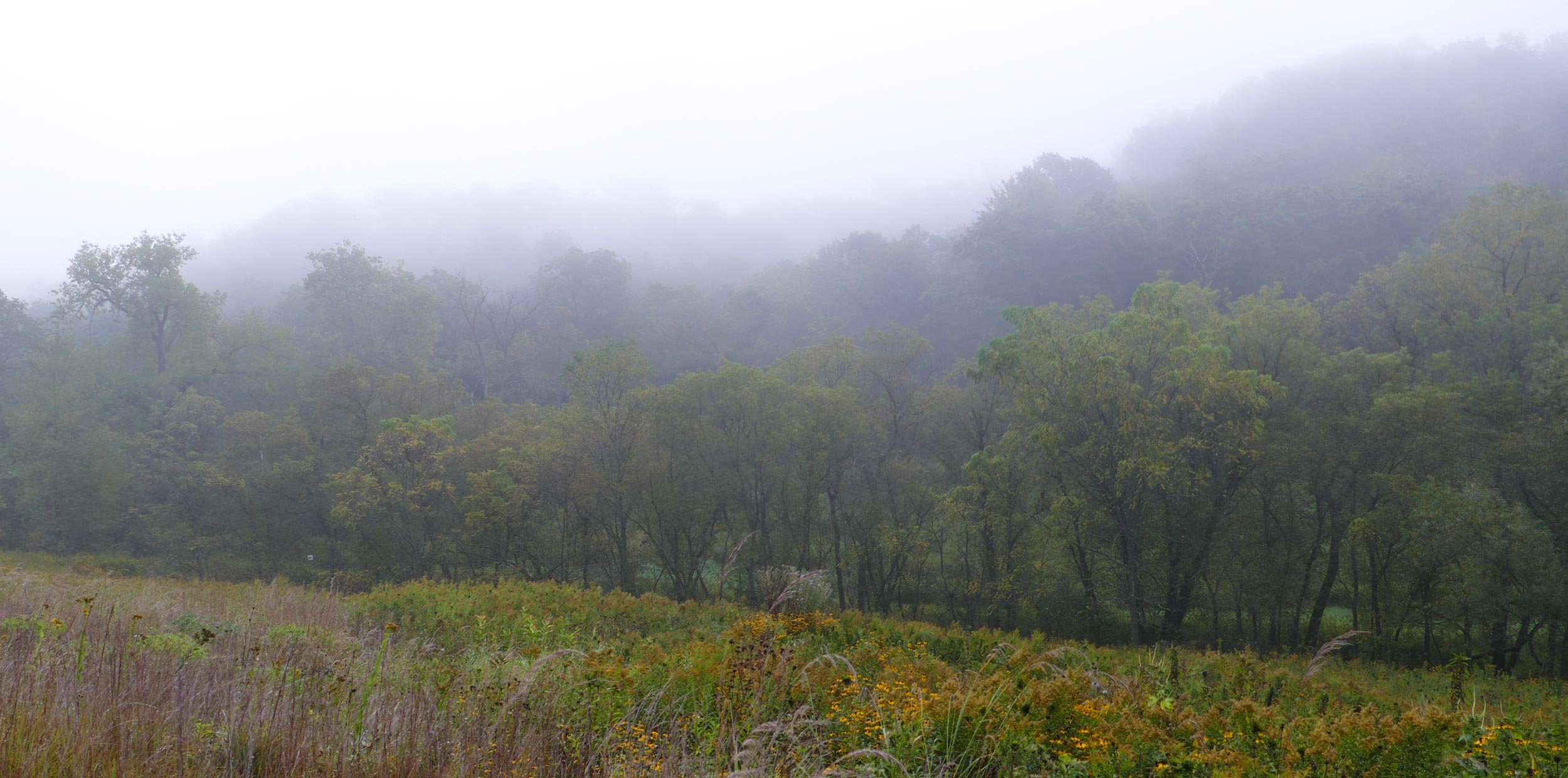It’s the end of summer already – fall always comes too fast.
Goldenrods and Asters, Gentians and Blazing Star are in bloom, and birds and butterflies have been migrating though on their way to warmer places.
For the last 3 years we’ve been counting the Monarchs we see on our afternoon walks, starting in mid-August. (We do the same 1 1/2 hour walk nearly every afternoon.) We were curious to see when the peak of the migration happens here, and whether we could see any other patterns.
Mike put all our counts on a chart so we could compare the numbers from all 3 years. This year has been a particularly good one for Monarchs – the population in our area is way up compared to many recent years. Our largest count this year was on August 31 – 544 Monarchs! It’s nearly the same peak date as last year.
One Monarch was even attracted to my moth lights one night – the first time that’s ever happened.
Favorite flowers as the Monarchs are passing through are Stiff and Showy Goldenrod, Rough Blazing Star, and New England Aster. Some of the largest clusters of Monarchs this year were on Showy Goldenrod – like this one.
Monarch and a Flower Fly on Showy Goldenrod
Showy Goldenrod is definitely a late summer favorite – this one has Bumblebees, a Flower Fly, Goldenrod Soldier Beetles, and a Corn Earworm Moth
Painted Lady butterflies migrate at this time of year too, and they cluster on some of the same flowers as the Monarchs. Here’s Rough Blazing Star with both Monarchs and Painted Ladies.
We’ve seen two migrating Red-headed Woodpeckers in the last few weeks. This one is a juvenile, on a dead tree in one of the savanna remnants.
Green Darner dragonflies rest on plant stems, or along the paths, and if they’re disturbed, or if the sun comes out, they fly up in huge swarms to hunt insects above the prairies. This one was resting on a goldenrod stalk.
Northern Flower moths emerge at this time of year to live their short adult lives – they’re only around as adults for about a week. They live on Sumac Prairie – our largest bluff prairie remnant. These two were sharing an Aromatic Aster flower.
Here are some end of summer flowers.
Blue Lobelia along the edge of the driveway
Blue Lobelia
Stiff Gentian
Swamp Thistle – one of the most beautiful of our native thistles.
Rough Blazing Star usually has magenta flowers, but sometimes has white ones. This year Buffalo Ridge Prairie has quite a few white ones.
Common False Foxglove – a lovely little annual that grows along wet edges of our driveway
This is an area that we cleared of brush a few years ago. The prairie/savanna plants are slowly recovering. Right now it’s full of blooming white asters.
Planted prairie blooms – Showy Goldenrod, New England Aster, Sky-blue Aster, and White Gentian.
Flat-topped Aster
Nodding Burr-marigold
Tall Sunflowers
I raised a couple of Common Buckeye butterflies from caterpillars I found along the driveway.
Common Buckeye chrysalis
An adult Common Buckeye sitting on my arm before being released
This is one of my favorite photos of a Milkweed Tussock Moth caterpillar. It looks like it has green triangles on its back, but those are actually just spaces between the hairy tufts where you can see the leaf behind it. Milkweed Tussock Moth caterpillars eat milkweed, but seem to prefer older leaves, rather than the fresh new ones that Monarch caterpillars eat.
Bear on the trail camera
Even the deer find the raccoons fun to watch.
Indian Pipe is an odd, plant that has no chlorophyll – it’s parasitic on fungi. I often find the dried flower stalks, but usually miss the flowers. These were in an overgrown savanna on the edge of one of our bluff prairie remnants.
Mushrooms and lichens on a fallen log
Buffalo Ridge Prairie with fall flowers
A misty morning
There haven’t been many good moth nights, and the nights are so cold that when I do see moths, they’re very cooperative.
White-lined Sphinx
White-lined Sphinx





